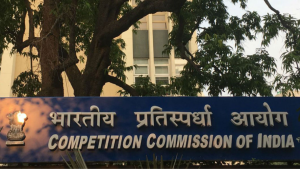

The Need for Speed((Y) Trial, and Not Just for Salman!)
Unless you’ve been in hiding, you’ll know that yesterday, Salman Khan was cleared of all charges in the 2002 hit-and-run case, where he was the accused. Last night, on the DAKSH blog, Harish wrote a piece on the questions that the quick disposal of Salman’s case raises about the functioning of our judicial system. To follow up, here’s another quick fact byte.
When Salman Khan filed his criminal [ithoughts_tooltip_glossary-glossary slug=”appeals-2″]appeal[/ithoughts_tooltip_glossary-glossary] on May 06, 2015 as APEAL/572/2015, his was the 572ndcriminal appeal filed in the Bombay High Court in 2015. His case was disposed yesterday. That means that from day of institution to the date of disposal, Mr. Khan’s case spent 220 days in court. We’ve already established in the previous blog post, as per the data we have collected that this is 21 times faster than other criminal appeals in the same court will be disposed.
The Bombay High Court, through its case status page, allows you to view all past hearings that a case goes through, along with the dates for each hearing . The table below shows a list of dates and hearings for Mr. Khan’s case.
This table shows that Salman had to sit through 47 hearings in 220 days. That translates to roughly 4- 5 days between hearings. As per the DAKSH data, this number would be very different for a regular Ram or Shyam. According to our data, on average, a case in the Bombay High Court would have to wait 51 days between hearings. In number speak this means that to go through the same number of hearings that Salman’s case did in 7 months, another criminal appeal would take more than 6 and a half years!
Apart from the query as to why a case needs to go through 47 hearings, there is the more obvious question – Doesn’t everyone have the same need for speed((y) trial)?
The views expressed in this article are solely those of the author’s and they do not represent the views of DAKSH.

Ramya Tirumalai
RECENT ARTICLES


Testing the Waters: Pre-Implementation Evaluation of the 2024 CCI Combination Regulations

Not Quite Rocket Science

Administration of justice needs an Aspirational Gatishakti

-
Rule of Law ProjectRule of Law Project
-
Access to Justice SurveyAccess to Justice Survey
-
BlogBlog
-
Contact UsContact Us
-
Statistics and ReportsStatistics and Reports
© 2021 DAKSH India. All rights reserved
Powered by Oy Media Solutions
Designed by GGWP Design
